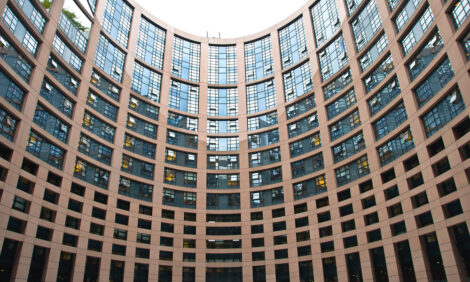



3 Ts Alliance publishes first evidence for case against painful procedures in pigs
The 3 Ts Alliance releases the first of its communiques detailing the evidence for the case against routine application of painful procedures in pigs.World Animal Protection, alongside a global group of experts, is working collaboratively to explore the complex practicalities of ending painful management procedures for pigs including tail docking, teeth reduction and surgical castration - the 3 Ts Alliance.
The purpose is to bring together a range of stakeholders with expertise in this area to discuss the barriers (technical, financial, regulatory, cultural) raised in some circumstances (e.g. countries, regions, product types, or production systems) and solutions used by others. The ultimate purpose is to use this information to develop an evidence-based case to take to the industry globally to support the phasing out of painful procedures to the benefit of pig welfare.
The statement from the latest alliance meeting has now been published and is as follows.
Evidence for pain
- According to the scientific literature, pigs are considered, beyond reasonable doubt, capable of experiencing pain associated with teeth reduction, tail docking and surgical castration.
- All procedures are acutely painful with resulting tissue damage being painful for some time afterwards:
- Surgical castration (an invasive procedure involving damage to the skin, deep tissue and viscera), results in pain persisting for many days after the procedure.
- Tail docking (cutting through sensitive tissue to remove a portion of the tail), results in acute pain and recent evidence shows hypersensitivity for months after tail docking, which experts believe has the potential to be chronically painful.
- Teeth reduction (by clipping or grinding to remove some of all the piglet’s incisors and canines) can involve damage to sensitive tissue (pulp opening) with evidence to suggest the risk of dental lesions exceed that of damage induced by leaving the teeth intact.
- Refinements, including reducing the age at the time of the procedure, changing method (eg, adjusting the length of the tail dock, using hot iron vs clippers, castration involving tearing vs cutting of the spermatic cord, teeth reduction by clipping vs grinding) and improving stockperson skills through training (although important) have not been shown to significantly alter the acute and long-term pain and stress associated with these procedures.
Pain mitigation
- None of the available and practically applicable pain mitigation strategies have been shown to be effective in removing or adequately reducing pain for the duration experienced by pigs undergoing these procedures.
- Partially effective pain mitigation for castration would have to include at least an anaesthetic for the procedure (suitable general or local injectable anaesthetic), along with prolonged post procedural pain relief in the days afterwards (a non-steroidal anti-inflammatory drug - NSAID).
- New evidence suggests that opioid pain relief reduces pain indicators of castrated and tail-docked pigs to that of controls but is not feasible for commercial pigs. Opioids are not licenced, affordable or proven safe for use in food producing animals.
- Ultimately, pain mitigation for acute and long-term pain is ineffective and impractical for the following reasons:
- Procedures still involve individual handling, stress and practical challenges with administration, especially at scale.
- General anaesthetics (eg, isoflurane, CO2) have risky side-effects for young piglets, can be aversive and do not prevent sensitisation (heightened sensitivity to painful or non-painful stimuli, eg, light touch), meaning piglets experience the same level of pain once the anaesthetic has worn off.
- Local anaesthetics (if used correctly) can be effective at reducing the acute pain of the procedure (for maximum 30 to 120 mins depending on type used), but require additional handling, are injected into a highly sensitive area (causing pain on injection), need skill and training, and have side-effects.
- Post procedural pain relief options are limited to the non-steroidal anti-inflammatory drug (NSAID) class, which are not effective at reducing the pain associated with the procedures in pigs. They also involve an additional injection and last a maximum of 24 hours.
- Ultimately, providing pain mitigation during such invasive procedures does not address the root causes of abnormal behaviours such as tail biting, piglet and udder injuries, including the motivation to perform natural behaviour (eg, foraging), the benefits of access to high fibre substrates and the focus on sow health and welfare to raise a healthy litter of piglets.
Wider welfare issues
- All procedures involve aversive handling, making piglets more fearful of humans and induce tissue damage, which can lead to a greater risk of infection and consequent pain, which can be associated with higher rates of piglet mortality.
- Infections entering through the resulting open wound sites reduce pig welfare and increase antibiotic use.
- There are ethical questions relating to removing parts of the animal.
- Pain mitigation does not address future pain sensitisation, fear of handling or behavioural impacts of the procedures, such as disrupted suckling, litter and maternal bonding, activity and resting.
- Tail docking and teeth reduction fail to address the underlying motivation to perform the damaging behaviour the procedures aim to avoid.
In the interests of improved pig health and welfare, the 3Ts global stakeholder alliance:
- Resolves to work collaboratively to discuss information and collate approaches to support the avoidance of painful procedures for pigs.
- Will meet to discuss the technical, financial and socio-cultural challenges that must be addressed to facilitate the avoidance of painful procedures and will issue a further communique on the findings.








